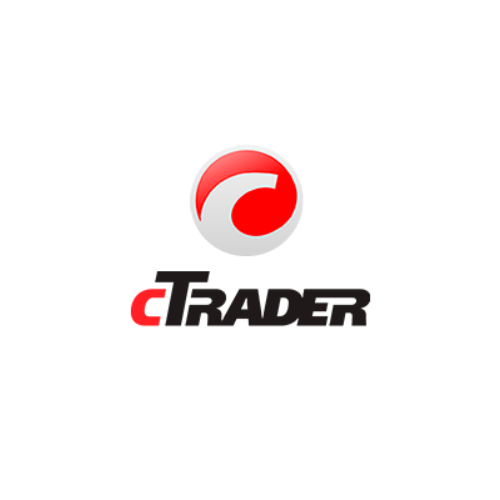Choosing between cTrader and MetaTrader depends on your needs and budget. Both trading platforms have quite a few differences that one must know before selecting. In this blog, we’ll help you make your decision-making slightly easier by comparing them head-to-head.
History of MetaTrader and cTrader
MetaTrader is a product of MetaQuotes Software. Its first widely adopted version, MetaTrader 4 (MT4), was released in 2005. MetaTrader quickly became one of the most popular trading platforms in the retail forex industry, primarily due to its simplicity, automation features, and support for custom indicators and expert advisors.
In 2010, MetaQuotes launched MetaTrader 5 (MT5), an expansion of the original platform. It offers more timeframes, additional order types, and access to several financial instruments. MT5 can support trading beyond Forex, including assets such as commodities, stocks, futures, and options on centralized exchanges.
A year later, in 2011, Spotware Systems introduced cTrader to the market. From the outset, cTrader focused on building a modern interface that appealed to both new traders and professionals. cTrader has a desktop version as well as iOS and Android mobile apps.
What is cTrader?

cTrader is a multi-asset forex and CFD trading platform. With a user-friendly interface and robust server technology, it offers advanced features, including rich charting tools, Level II pricing, fast entry and execution, multiple order types, in-depth market analysis, automatic technical pattern recognition, a real-time news feed, a volatility calendar, and more.
Pros
- Direct Market Access: cTrader operates on an ECN (Electronic Communication Network) model, which enables brokers to offer their traders direct access to the market. This setup eliminates conflicts of interest, as orders are executed directly in the market without involving a dealing desk.
- Advanced Trading Features: The platform includes sophisticated tools such as advanced charting capabilities, market depth analysis, and automated trading through cAlgo (using C#).
- Strong Community and Support: cTrader has a growing community that shares tools and resources, which can be advantageous for brokers seeking to enhance their service offerings without developing everything in-house.
- User-Friendly Interface: It has a user-friendly interface that simplifies trading for users and can potentially increase client satisfaction and retention.
- Comprehensive Reporting Tools: Brokers can leverage cTrader’s reporting capabilities to provide clients with detailed insights into their trading performance, which can be useful in building long-term relationships.
Cons
- Higher Commission Costs: cTrader might not be suitable for fee-sensitive traders as it typically operates on a commission-based model. Commission-based models can lead to higher trading costs than traditional market-maker models.
- Limited Account Types: The platform primarily supports ECN accounts, which require higher minimum deposits and may not be suitable for all types of traders, particularly those with smaller capital.
- Dependency on Third-Party Development: While cTrader allows for custom development of trading bots (cBots), this requires programming knowledge in C#. Brokers may face challenges if their clients lack coding skills or require extensive customization that’s unavailable.
- Limited Language Support: cTrader currently supports only 22 languages compared to some competitors.
- Market Liquidity Issues: During periods of low volatility, brokers may encounter challenges with liquidity that could affect order execution quality, such as partial fills or slippage.
What is MetaTrader?

MetaTrader is a popular trading platform widely used by both traders and brokers. It enables online trading across various assets like currencies, CFDs, stocks, futures, and options and comes equipped with price charts, built-in indicators, and the ability to manage multiple accounts. One notable feature is its programming language, MQL4/MQL5, which is similar to C.
Pros
- Widespread Adoption: MetaTrader is the most used platform globally, with more than 50% of brokers offering it. This means brokers can attract more clients as most traders are aware of the solution.
- User-Friendly Interface: It is easy to use and has higher client retention.
- All-inclusive features: MetaTrader offers unmatched features, including automated trading through Expert Advisors, advanced charting tools, and various technical indicators, for better trading experience.
- Community Support: MetaTrader has an expansive user community that lets traders access a wealth of shared resources, including free indicators and trading strategies that brokers can utilize to enhance their services.
Cons
- Installation Requirement: MetaTrader has a web version, but users may need to download the desktop or mobile app to access its full functionality, which might be inconvenient for some users.
- Customer Support Limitations: Online forums and communities also suggest poor customer support from MetaQuotes, which can be a problem when immediate assistance is needed.
- High Competition Among Brokers: The widespread use of MetaTrader means that many brokers offer similar services, which can increase competition and lower spreads and commissions.
User Interface and Customization
The way a trading platform looks and feels plays a big role in how traders interact with it. Both MetaTrader and cTrader offer straightforward, easy-to-use interfaces that make it simple to place trades and analyze markets. But when it comes to customization, the experience starts to diverge.
cTrader provides users with significantly more control over how their workspace is configured. Traders can adjust window layouts, manage multiple charts on one screen, and fine-tune indicators according to their preferences. This flexibility allows users to create a setup as per their trading style and habits.
MetaTrader, particularly MT4, is more limited in this area. While MT5 introduced some improvements, many aspects of the interface remain relatively unchanged compared to what cTrader offers. For traders who want a highly personalized layout, cTrader provides more room to adjust and optimize the trading environment.
Charting and Technical Analysis
Both cTrader and MetaTrader have comprehensive charting and analysis tools that cover most traders’ needs. You’ll find multiple chart types, various timeframes, and a solid set of drawing features on both platforms.
Where cTrader distinguishes itself is in the built-in charting experience. It comes with over 70 indicators pre-installed, smooth drawing tools, and detailed depth of market (DoM) features. Traders can access three DoM views—Standard, Price, and VWAP—providing clearer visibility into liquidity and price action.
MetaTrader is a favorite among traders who like to customize their analysis. Its large community has created a vast library of third-party indicators, expert advisors, and add-ons. This ecosystem allows traders to extend the platform’s functionality far beyond what comes built-in.
MetaTrader vs. cTrader: Overview
| Feature | cTrader | MetaTrader (MT4/MT5) |
| User Interface | Modern, streamlined single-screen layout | Traditional multi-window interface |
| Timeframes | 26 timeframes | 9 timeframes (MT4), 21 timeframes (MT5) |
| Built-in Indicators | 70+ built-in indicators | 30+ built-in indicators (MT4), 38 (MT5) |
| Programming Language | C# | MQL4 (MT4), MQL5 (MT5) |
| Community and Ecosystem | Smaller community, growing marketplace | Large community with extensive resources and plugins |
Final Thoughts: Which Platform is Better?
cTrader offers a more user-friendly, out-of-the-box experience with advanced charting and order types. MetaTrader has a larger community, more customization options, and is the industry standard for algorithmic trading.
By evaluating MetaTrader and cTrader against critical criteria such as usability, customization, technical tools, asset variety, mobile capabilities, and security features, brokerages can make informed choices that align with their business objectives.
Brokeree Works Across Platforms
Brokeree’s technology stack supports brokerages no matter which trading platform they offer.
Most of Brokeree’s solutions, including Social trading, PAMM, and liquidity bridge are fully compatible with both MetaTrader and cTrader. It gives brokers the freedom to build their ideal offering while still leveraging Brokeree for backend operations, client management, and revenue optimization.
Book a demo to learn more:




